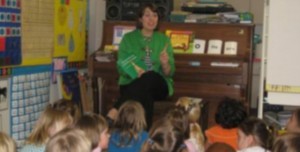What the hell is Data-driven learning? Well, this was a question I was asked recently when I accidentally introduced this confusing piece of metalanguage to my poor students. Basically, it is a form of classroom presentation or activity that has been associated with the lexical syllabus and communicative methodology. Let me try and explain for newbies.
In the groundbreaking text The Lexical Syllabus, Willis (1990) defined three different forms of classroom activities in the communicative approach: citation, simulation, and replication. Citation activities or language drills involve simply quoting lines of dialog in order to use the language, ‘but such a concept is contradictory, since the essence of communication is choice and a basic requirement of drilling is the restriction of choice’ (Willis, p. 58). Willis defined simulation activities as activities which seek to demonstrate a manipulation and mastery of the forms, but the exchange is not a genuine information exchange because the focus is form not meaning. Willis associated DDL with replication activities, activities that attempt to replicate ‘real world’ communication, because true communicative exchanges entail an element of the unknown, of problem solving, and of information gathering.
Many of my students, to give an example, find difficulty in distinguishing the usage of going to, will, and plan to for future plans. A citation activity with these structures could be a listening activity followed by a dialog that is recited in pairs to show the usage in the context of one contrived conversation. The learners would be exposed to an extremely limited use of these structures and the activity would not involve the students cognitively.
 A simulation activity with these forms might be an open class “discussion” in which the teacher asks questions using the target tenses and the students respond in the target language. The focus would not be the students’ weekend or summer plans, but accurate production of the target structures. The discussion would be an information exchange, but students would be aware that the focus of the activity is control of the form rather than the exchange of information.
A simulation activity with these forms might be an open class “discussion” in which the teacher asks questions using the target tenses and the students respond in the target language. The focus would not be the students’ weekend or summer plans, but accurate production of the target structures. The discussion would be an information exchange, but students would be aware that the focus of the activity is control of the form rather than the exchange of information.
A DDL replication activity for the structures might involve an attempt to uncover the rules for usage from a list of sentences that contain the target structures in context taken from a large corpus, such as the COBUILD corpus used for this study. In order to accomplish the task the learners would be engaged cognitively, and they would be focused on the target language for an extended period of time. With the learners working in small groups or pairs genuine discussion and negotiation of meaning would take place.
In his utterly essential article, ‘Should You be Persuaded – Two Samples of Data-Driven Learning Materials‘, Johns (1991) described his procedures of Identify–Classify–Generalize for classroom based concordance and data-driven learning. In effect, Johns’ classroom procedures complement Willis’s replication activity because the procedure relies heavily on inductive learning and genuine discourse. Johns’ procedure uses a machine produced concordance of citations that is edited by the teacher to emphasize a particular use of a structure in context. The teacher then creates a handout based on the selected citations. “While all the citations shown in the handout are authentic, there is in this handout a degree of “rulehiding” in the selection of the citations, the categories adopted, and the sequencing of citations within each category” (Johns, p. 4). DDL provides the basis for the formulation of rules based on data that may be accessed, investigated, and examined.
Further reading:
http://www.lexically.net/wordsmith/corpus_linguistics_links/Tim%20Johns%20and%20DDL.pdf
http://www.cels.bham.ac.uk/resources/LexSyllabus/lexsch1.pdf
Post Footer automatically generated by Add Post Footer Plugin for wordpress.